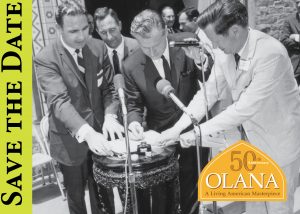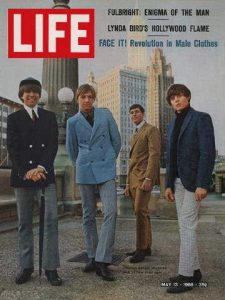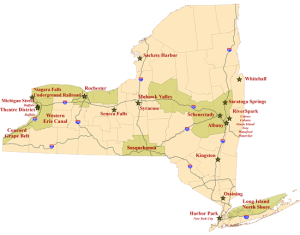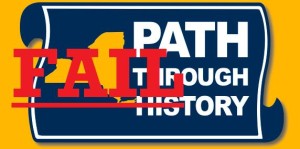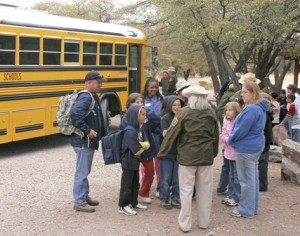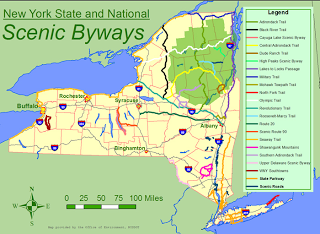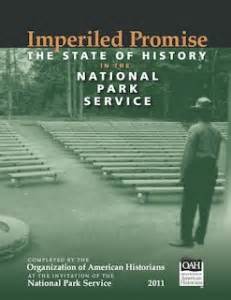
Imperiled Promise: The State of History in the National Park Service is the title of a study commissioned by the NPS in partnership with the Organization of American History (OAH). Although first published in 2011, it was slow to see the light of day. In 2014, it was the subject of a pre-New York State History Conference workshop which I attended and wrote about during the NPS Centennial in 2016. I had intended to delve more deeply into the report itself which I downloaded but never quite got around to writing about it. In this post I wish to begin to address the findings of the study. As you will see, the comments are doubly important for New York State:
1. We have many NPS sites in the state
2. The issues raised frequently apply to state historic sites as well.
The findings also are related to the fledgling Massachusetts History Alliance’s efforts to forge exactly what the name says, a history alliance in Massachusetts. I recently attended its conference held at Holy Cross and will reporting on those developments in future posts. There is a lot going on and it is difficult to keep up.
According to the Executive Summary of Imperiled Promise, history is at the heart of approximately two thirds of nearly four hundred national park units. At the time of the report, 182 NPS employees carried the job title of “Historian.” However, the authors pointed out that people without the classification may do history-related work as well. I don’t know what the comparable figures are for the NYSOPRHP.
The attendance of the sites is part of the story. By way of perspective, a local news report in 2016 provided the following NPS attendance figures for 2015 in Dutchess County:
Vanderbilt Mansion drew 431, 961 visitors ranking 133rd of 368 NPS destinations but 6th for National Historic Sites. By comparison the White House had 526, 623 visitors. Other NPS sites in Dutchess include, FDR ranked 11th and the related Val-Kill ranked 26th. All these sites were outdrawn by Walkway over the Hudson, a state site with 448, 719 and some by the Dutchess County Fair with 394,422.
These numbers can be deceiving especially in a PowerPoint presentation. Vanderbilt Mansion on the Hudson River serves a community park much like Central Park. It is a lovely setting for painting, photography, dog-walking, jogging, and other park activities that just happen to occur on land which has an historic mansion. Similarly the Walkway over the Hudson River is another spectacular recreation setting. By and large both sites with free grounds access are day trips if not after-work visits. By comparison, the Grand Canyon drew an estimated 5.5 million people the same year. Besides the admission fees, people who visit it spend money on meals, souvenirs, lodging, and transportation. Attendance numbers need to be treated very carefully depending on what one is trying to prove or demonstrate. They also highlight a divide noted in the report between the recreational and historical sites managed by the same organization. As I recall at a preservation conference in 2016, even NYSOPRHP joked about the number of historical versus recreation sites under its umbrella. Obviously in New York, Jones Beach and Niagara Falls will outdrew any traditional historical site and that does affect the allocation of funding and management time.
Returning to the Executive Summary, the following observation bears notice. I know that my blogs can be very pointed but pay attention to what was reported in this NPS-commissioned study:
“[The NPS’s mission] has been imperiled by the agency’s weak support for its history workforce, by agency structures that confine history in isolated silos, by longstanding funding deficiencies, by often narrow and static conceptions of history’s scope, and by timid interpretation.”
Not exactly subtle or complimentary. Do these conditions apply at all at the state level as well?
Naturally, the authors of the study have recommendations to remedy the situation. The issue of whether or not these recommendations were implemented or whether the report was filed on the consultant reports shelf as one NPS Ranger delicately phrased it will be deferred until after they are presented.
The first recommendation required a commitment by the NPS to history as one of its core purposes. That commitment required the NPS to “invest” which has the implication that at some point money is required to do what the report recommends is needed to be done. The investment should be for:
1. creating a robust place-based visitor engagement with history
2. connecting the history of the site to the histories beyond the boundaries of the site
3. forthrightly addressing conflict and controversy in history and its interpretation in the present.
To achieve this vision, the NPS would be obligated to overcome the legacies that undermined the effort. The negative legacies included:
1. underemphasis and underfunding of historical work
2. artificial separation of cultural resources management from interpretation
3. artificial separation of natural resources interpretation from cultural and historical interpretation
4. overemphasis on mandated compliance activities
5. a misperception of history as a tightly-bounded fixed and accurate story instead of being an ongoing process of discovery with changing narratives and multiple perspectives.
To address these concerns, the authors proposed almost 100 recommendations (which I will not list). They involve the management, workforce development, and funding. In general terms, one may say there is an issue of the “historian” function at an historic site. What is the training necessary to become an historian? How does one maintain competence in the field or engage with ongoing scholarship to remain current? Are there organizational meetings devoted to history that staff at historic sites should attend? How can existing state and regional organizations support history in addition to curating and exhibit presentation? Would some kind of history certification process be beneficial such as teachers have using professional development to increase their salary? How relevant is all this for the local often volunteer municipal historical society and museum?
Two items in the Executive Summary recommendations bear special notice. They both involve bringing together and creating an empowered leadership. The authors of Imperiled Promise challenge the NPS to create two groups:
1. History Leadership Council, an internal group comprised of the most talented and influential historians and interpreters
2. History Advisory Board, an external-based group comprising the nation’s leading public history professionals, innovative curators, insightful scholars, savvy administrators.
The authors felt that if such groups were formed with legitimate leadership and authority from the NPS, the other challenges could be overcome. In-other-words, they proposed a top-down solution that would gradually impact the grassroots level at the individual sites. Care to guess what actually has happened?
In any event, one can readily observe that similar considerations apply at the state level as well. One may even add that historic sites are owned and operated not just by the states but by counties, cities, towns, villages, and privately. As it turns out, all history organizations in the state would benefit if some of the recommendations were opened up to extended beyond the NPS itself. In future posts, I will explore in more detail what the Imperiled Promise report specifically recommended and provide some examples of what the NPS in New York actually is doing.



